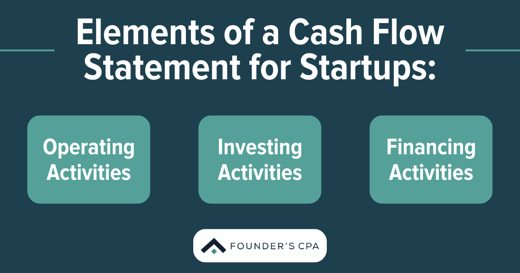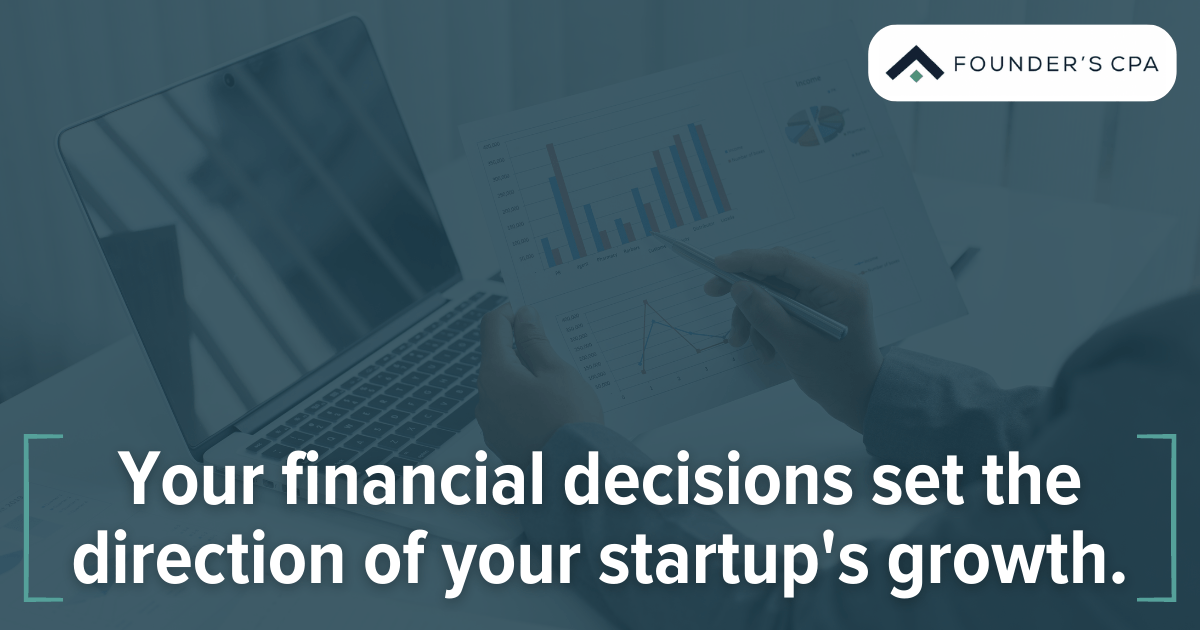Obvious (and Not-So-Obvious) Ways to Manage Cash Burn
A cash flow statement for startups is an essential financial tool showing owners, investors, and creditors a company’s ability to generate cash inflows and its overall profitability.
If you are running an early-stage startup, you might find knowing how much money you have and estimating your needs challenging. However, the cash flow statement can show how much money is coming in and out at any time. It also includes accounts receivable, accounts payable, and other items not typically included on a balance sheet.
This post will cover everything you need to know about the cash flow statement, including how to prepare one and the challenges you might face.

Elements of a Cash Flow Statement for Startups
The statement of cash flows focuses on three main activity categories: operating, investing, and financing.
Operating Activities
These activities generate revenues and expenses for the company through its day-to-day operations. For example, an online shoe store might receive customer orders, pay suppliers and employees, and advertise to attract more customers.
Investing Activities
Investing activities section shows all cash inflows and outflows associated with investing in capital assets, including property purchases, plant and equipment, and mergers or acquisitions are all investing activities.
- Cash inflows: cash received from the sale of investments (can be a sale of shares, property, or other assets).
- Cash outflows: include any investment expenses, such as interest payments on loans and taxes paid on income.
Financing Activities
Financing activities include cash movements from changes in shareholders’ equity and liability. Proceeds from issuing long-term debt are an example of inflow from financing activities, while principal repayments of capital lease obligations are an example of outflows from financing activities.
How to Prepare a Cash Flow Statement
Quick Guide for Preparing a Cash Flow Statement
Putting your cash flow statement together can be simple, with some basic information from your financial statements.
-
To prepare a cash flow statement for startups, start with the beginning cash balance. The beginning cash balance is the money available at the start of the reporting period. It’s also known as the original cash balance or starting balance.
-
The second step is adding cash inflows from operating, investing, and financing activities. The amount you add in this step reflects the backbone of the business. It must be accurate and tie back to your other financial statements.
-
The third step is subtracting cash outflows from operating, investing, and financing activities. Here you remove all additional costs and expenses related to your business activities that don’t fall under any other source of funds during your reporting period. They can range from salaries to rent, utility bills, equipment depreciation costs, or uncollected sales taxes.
Challenges in Preparing a Cash Flow Statement
Non-cash items are those that don’t involve money changing hands. These are typically reported through accounting entries or adjustments and can be challenging to report, including:
-
Uncollected sales
-
Accounts receivable where no money has flowed
-
Depreciation, amortization, and taxes that aren’t reported on the income statement but affect cash flow
Estimating cash inflows and outflows is essential for preparing a cash flow statement, and it helps to know what you expect to happen with inflows and outflows for the current period.
The reconciliation of a cash flow statement with other financial information is necessary for ensuring reliable indicators of a company’s financial health. For example, the income statement may include non-cash items that do not represent the actual cash picture of the company, such as depreciation or stock-based compensation expenses.
Importance of Cash Flow Statement for Startups
The cash flow statement can provide lots of information essential for planning your company’s financial future.
Better Financial Planning And Budgeting
Your cash flow statement is a great tool to help you better understand your business’ finances. It will help you make better financial decisions, plan for the future and budget your money.
Improved Decision-Making
The cash flow statement can help you decide which projects to pursue, when to expand, and how much money you have available to invest in your business.
Easier Access to Funding
If you have been struggling with financing, your cash flow statement can help you find potential lenders willing to lend money by giving them a better idea of how much money you need and what kind of return they can expect from lending it to you.
Identify Cash Flow Problems Earlier
The cash flow statement aims to help you spot cash management problems early on in your business, allowing you to take preventative measures before they become an issue. For instance, if you realize a problem with overdue receivables, you can immediately stop extending credit to non-paying customers to limit their debts.
Determine How Business Decisions Affect Cash Flow
Your cash flow statement is a powerful tool for evaluating the impact of business decisions on your cash flow. It will help you determine whether you have sufficient funds to complete your business plan and whether there are any long-term liabilities that you need to plan for.
Show Financial Stability to Investors and Lenders
Your cash flow statement is a snapshot of how well your business is performing and how stable it is. Investors and lenders can use it to determine whether you can make payroll, pay taxes and meet other loan obligations.

Get the Most Out of Your Cash Flow Statement
Your financial decisions set the direction of your startup’s growth. Prioritizing cash management can help your business maintain liquidity and stay on track. As a founder, you can use the information from the cash flow statement to understand how business decisions impact cash flow.
The startup and small business experts at Founder’s can help you ensure you get the best information and results from your cash flow statement – contact us today to learn how.

Apr 26, 2023 7:00:59 PM



